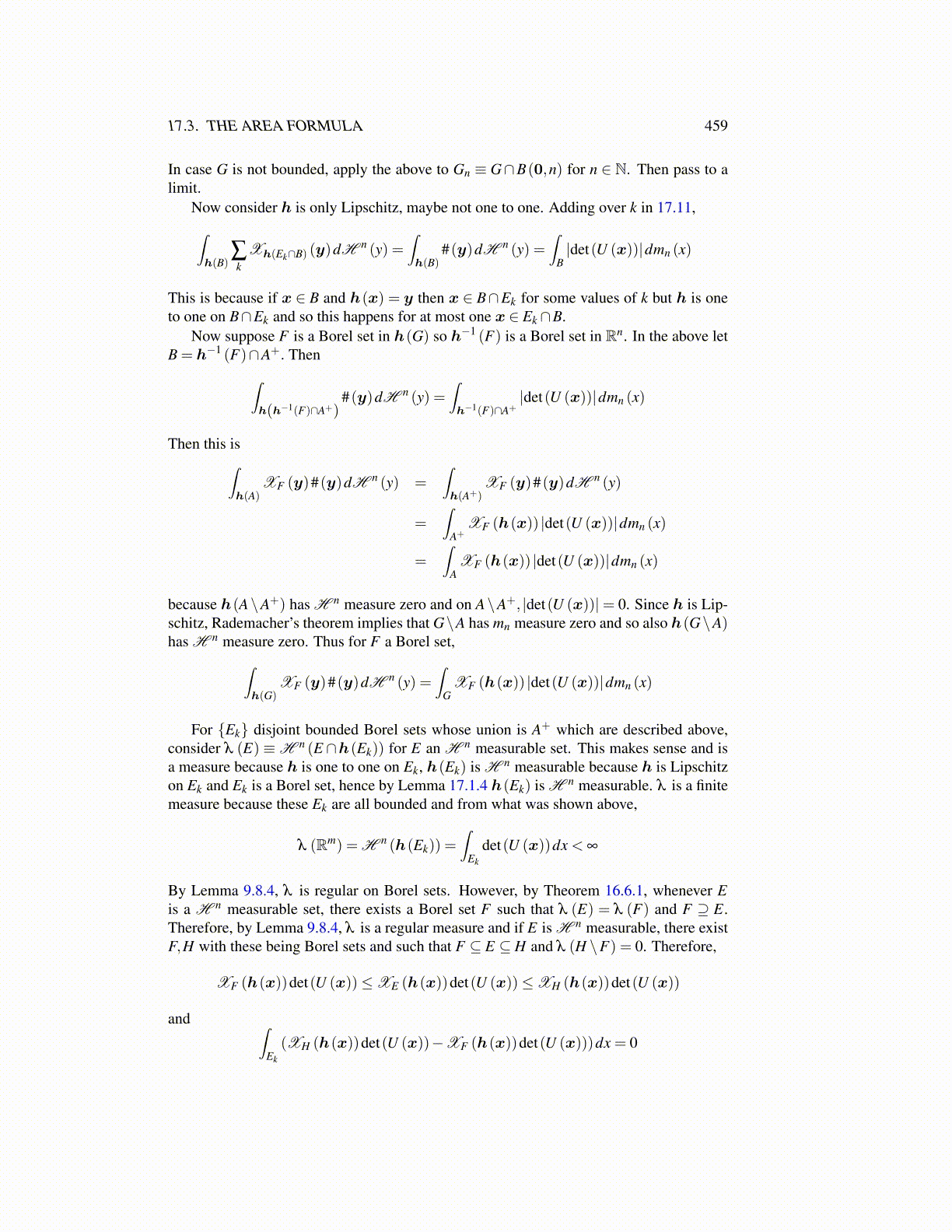
17.3. THE AREA FORMULA 459
In case G is not bounded, apply the above to Gn ≡ G∩B(0,n) for n ∈ N. Then pass to alimit.
Now consider h is only Lipschitz, maybe not one to one. Adding over k in 17.11,∫h(B)
∑k
Xh(Ek∩B) (y)dH n (y) =∫h(B)
#(y)dH n (y) =∫
B|det(U (x))|dmn (x)
This is because if x ∈ B and h(x) = y then x ∈ B∩Ek for some values of k but h is oneto one on B∩Ek and so this happens for at most one x ∈ Ek ∩B.
Now suppose F is a Borel set in h(G) so h−1 (F) is a Borel set in Rn. In the above letB = h−1 (F)∩A+. Then∫
h(h−1(F)∩A+)#(y)dH n (y) =
∫h−1(F)∩A+
|det(U (x))|dmn (x)
Then this is∫h(A)
XF (y)#(y)dH n (y) =∫h(A+)
XF (y)#(y)dH n (y)
=∫
A+XF (h(x)) |det(U (x))|dmn (x)
=∫
AXF (h(x)) |det(U (x))|dmn (x)
because h(A\A+) has H n measure zero and on A\A+, |det(U (x))|= 0. Since h is Lip-schitz, Rademacher’s theorem implies that G\A has mn measure zero and so also h(G\A)has H n measure zero. Thus for F a Borel set,∫
h(G)XF (y)#(y)dH n (y) =
∫G
XF (h(x)) |det(U (x))|dmn (x)
For {Ek} disjoint bounded Borel sets whose union is A+ which are described above,consider λ (E) ≡H n (E ∩h(Ek)) for E an H n measurable set. This makes sense and isa measure because h is one to one on Ek, h(Ek) is H n measurable because h is Lipschitzon Ek and Ek is a Borel set, hence by Lemma 17.1.4 h(Ek) is H n measurable. λ is a finitemeasure because these Ek are all bounded and from what was shown above,
λ (Rm) = H n (h(Ek)) =∫
Ek
det(U (x))dx < ∞
By Lemma 9.8.4, λ is regular on Borel sets. However, by Theorem 16.6.1, whenever Eis a H n measurable set, there exists a Borel set F such that λ (E) = λ (F) and F ⊇ E.Therefore, by Lemma 9.8.4, λ is a regular measure and if E is H n measurable, there existF,H with these being Borel sets and such that F ⊆ E ⊆ H and λ (H \F) = 0. Therefore,
XF (h(x))det(U (x))≤XE (h(x))det(U (x))≤XH (h(x))det(U (x))
and ∫Ek
(XH (h(x))det(U (x))−XF (h(x))det(U (x)))dx = 0